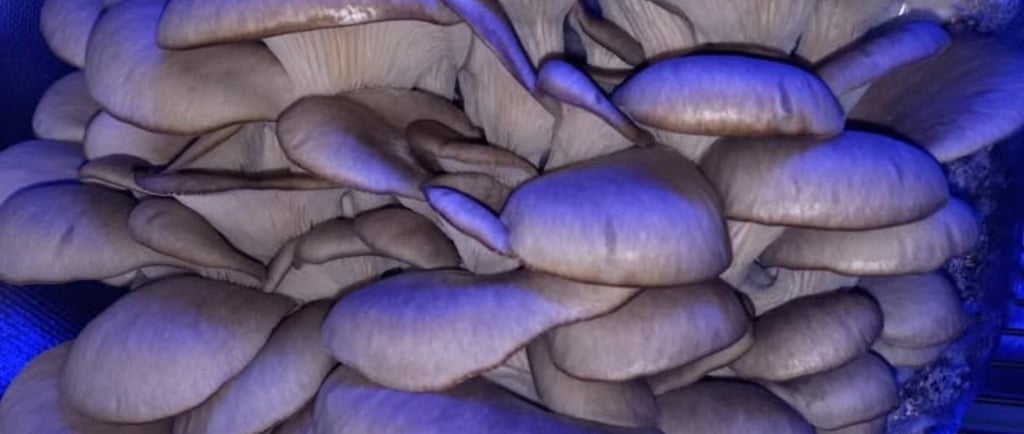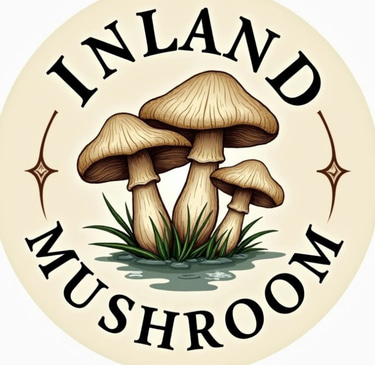Blue Oyster Mushroom Strain Guide (Beginner-Friendly Gourmet Grow)
Learn how to grow blue oyster mushrooms at home. Strain breakdown covering temperature, humidity, substrate, and beginner-friendly growing tips for fast, reliable harvests.
GROWING
10/22/20251 min read


🍄 Blue Oyster Mushroom (Pleurotus ostreatus) Strain Breakdown
Blue oyster mushrooms are one of the easiest and fastest gourmet species to grow — and they reward you with dense clusters and a clean, mild flavor. They’re perfect for new growers learning agar, grain, and fruiting conditions because they’re aggressive colonizers and very forgiving.
🧠 Quick Facts
Scientific name: Pleurotus ostreatus
Growth temperature: 55–75°F (best around 65°F)
Incubation time: 10–14 days on grain
Fruiting humidity: 90–95%
CO₂ sensitivity: High (needs strong airflow for proper cap development)
🌾 Why I Like Growing Blue Oysters
I’ve grown a lot of species over the years, and blue oysters always stand out. They grow fast, smell clean, and don’t demand perfect conditions.
Even if your humidity or temps fluctuate a bit, they’ll still produce nice flushes. They also colonize bulk substrate like coco coir or straw lightning fast — perfect for experimenting with new spawn recipes.
🧫 My Current Culture
Right now, I’ve got a new blue oyster syringe on the way, and I’ll be starting it on no-pour agar jars as soon as it arrives.
I’ll post an update once the culture starts showing growth, but for now, here’s what I’m planning:
Inoculate 4–5 agar jars
Expand clean wedges to grain
Spawn to coco coir + vermiculite mix
Use open-air humidity instead of a tent to test how it fruits in ambient conditions
⚡ Why It’s a Good Beginner Strain
Extremely fast colonization (outcompetes most contaminants)
Fruits easily in a variety of conditions
Tolerant to beginner mistakes like inconsistent misting or light leaks
Looks awesome in photos — that bluish-gray cap color stands out
🧩 Common Mistakes
Not enough airflow → long stems, small caps
Fruiting too warm → lighter color, thinner clusters
Over-misting → soggy caps or bacterial blotch
If you’re new, focus on fresh air and clean spawn — those two things fix 90% of blue oyster issues.
🏁 Final Thoughts
If you’re just getting into gourmet growing or coming from cubensis-style monotubs, blue oysters are the perfect transition species. They teach you how to manage humidity, airflow, and contamination without requiring a lab-grade setup. Plus, they taste great sautéed or tossed into stir fry once you’re harvesting consistently.
Cultivation
Helping you master gourmet mushroom cultivation — on or off the grid.
© 2024. All rights reserved.
